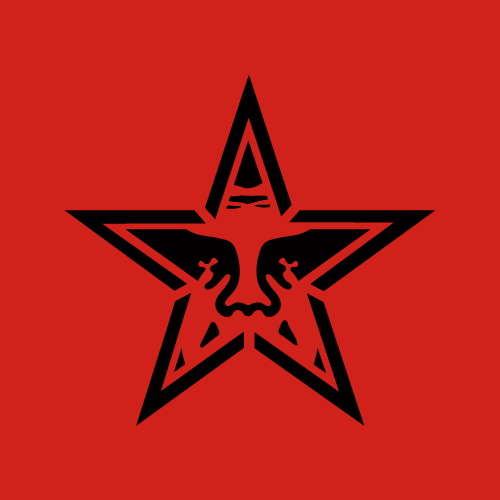Style warriors by Anthony Lappe, Sept-October 1999
Shepard Fairey was an art school skate punk making bootleg Public Enemy T-shirts and selling them under his boss’s nose at a skate shop when he discovered the Giant. While demonstrating the silk-screening process to a buddy, he stumbled across a photo in the newspaper of Andre the Giant, the preposterously large professional wrestler. He was mesmerized.
“I thought ‘this guy is so large, so ugly,'” he says. He and his friends joked that they should name their loose-knit posse of skaters after the 7’4″, 520 pound grappler.
Fairey made some stickers and started posting them up around Providence, RI, where he was studying at the Rhode Island School of Design. Soon he noticed people in supermarkets talking about the mysterious appearance of obey giant’s face across town. “What did it mean?” people wanted to know. This was cool, Fairey thought.
“You are so used to being bludgeoned with commercial images, that when something doesn’t tell you to vote for someone or buy something it’s confusing,” he says. “It brings to light other stuff that is going on that people are numb to.”
It’s been ten years since the first Giant stickers went up. “It was ridiculous to take this hero of white trash culture and make him an icon,” he says. But that is exactly what happened. Today, the Giant’s mug can be found on literally hundreds of thousands of posters, stickers, and billboards across the country. “It became a graphic chain letter,” Fairey says.
Essentially, the Giant Experiment, as Fairey calls it, is about getting people to engage their environment. The stickers are a social Rorschach test — how someone reacts to the Giant says a lot about who they are. Many people are annoyed at first, he says, wanting a simple explanation to what they are looking at. They usually go from annoyed to intrigued. And in most cases the confusion and uncertainty ultimately provokes discussion. And that is good, says Fairey.
But for others, the unknown only provokes fear. “The paranoid or conservative viewer may be confused by [obey giant’s] persistent presence and condemn it as an underground cult with subversive intentions, “Fairey writes in the Giant Manifesto, a pseudo-philosophic tract he concocted to explain his mission. He offers a recent example of public anxiety. A round of postings in Scripps Ranch near San Diego sent waves of panic through the manicured, upper-middle-class suburb. In the community’s monthly newsletter, parents are urged to beware of “illegal postings by an aggressive hate group… [their] signs, which have been pasted on utility boxes and near schools, are somewhat innocuous, sometimes only having a face and the phrase ‘Obey'” The letter goes on to address the unknown culprits with a simple, indignant warning: “You are not welcome here.”
For yet others, the stickers have the exact opposite effect. Similar to hip, street clothing brands like PNB Nation or 555-Soul, they create comfort and familiarity –a sense of inclusiveness for those on the fringe. “For some people, it’s kind of become a trendy thing. Having a sticker gives them a sense of belonging,” says Fairey.
While Espo is trying, in a sense, to make himself a brand, The Giant brand exists alone, as an idea that is selling nothing. It asks you to “Obey” but offers nothing to follow, leaving you to question the very notion of obedience.
While Fairey has remained largely anonymous to the public, like Espo, he too has been sought by corporate culture to let them in on the secret. When scouts from a trendspotting firm working for Mountain Dew showed up to pick his brain on how the green, caffeine-saturated sugar water could reach more Gen X mouths, Fairy told them point-blank that their ads sucked. His comments made it back to corporate HQ. Instead of being offended, the Mountain Dew “dudes” called him and offered him a job helping design the new can. While most of his ideas never made it onto aluminum, Fairey says he got close to putting a small, subliminal Giant face on one of the designs. It would have reached tens of millions of people. “That would have made it worth it,” he says.
Today, Fairey has his own San Diego based street marketing firm called Black Market. Their clients have included Levis, Volkswagen, FuBu, Adidas, and Mecca.
“I don’t have a problem with advertising,” he says. “All of that propaganda out there, people can enjoy it depending on where they sit. It’s powerful stuff, designed to motivate and indoctrinate. But it’s not necessarily bad.”
